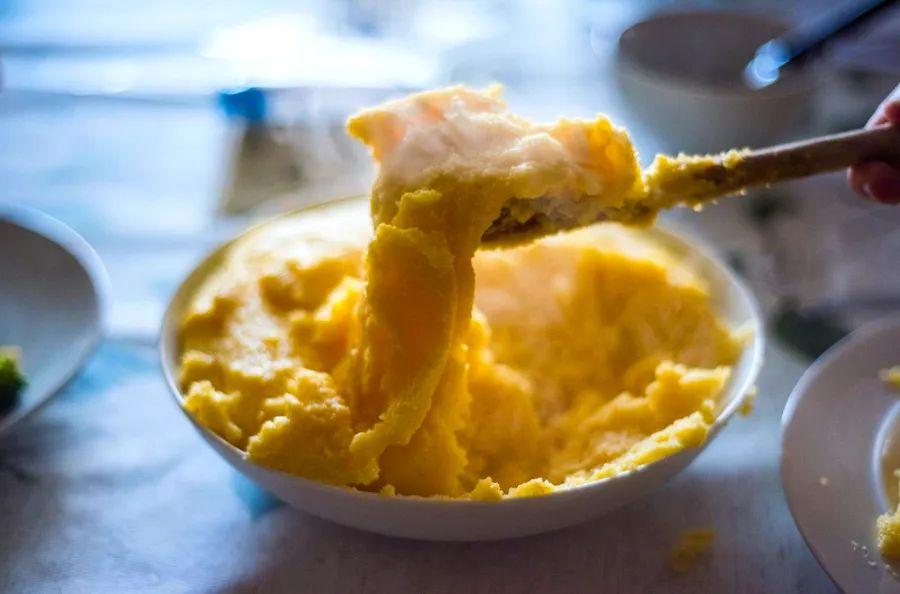My Grandmother's Italian Secrets for Perfect Polenta

Though my roots are in Naples, my grandmother frequently prepared this northern Italian dish for our family. Polenta is tasty, budget-friendly, and easy to make in large quantities for a crowd—ideal for anyone looking to stretch a meal. The recipe is simple but can be tricky to perfect. Poorly made polenta is often lumpy, sticky, and bland. Over the years, I've learned key tricks from my grandma to avoid these pitfalls and create a flawless dish every time.
The Perfect Polenta
To achieve the best polenta, use coarse, stone-ground yellow cornmeal. Instant polenta may save time but results in a slimy, unpleasant texture, so it's best to steer clear of it.
For authentic polenta, it's worth investing the extra time. Look for any bag labeled 'polenta,' or if that's unavailable, any yellow cornmeal marked coarse or extra coarse. If possible, always opt for stone-ground varieties, as the unique grinding process delivers a superior texture in the final dish.
The Liquid Choice
In traditional Italian recipes, polenta is always made with water. While some American versions might suggest using milk or stock, I believe that's a mistake. Using water lets the natural corn flavor stand out, while also allowing the grains to absorb the salt more effectively.
Using stock to cook polenta can muddy the flavor, making the dish taste like stock rather than highlighting the delicate corn flavor. Milk, on the other hand, often makes the dish overly rich and heavy. Adding butter or cheese makes it even more dairy-forward and can result in a cloying texture. Plus, when milk is used, polenta can end up resembling paste. Cooking it with water is the traditional method, and adding a small amount of milk later on gives it a creamy texture without the overpowering milk taste.
The Polenta to Liquid Ratio
One of the best things about the recipe I’m sharing is its flexibility—you can easily scale it up or down depending on how many servings you need. The classic polenta to liquid ratio is technically 1:5, but I prefer a 4:1 ratio of water to polenta to start, then add 1 part milk as it cooks. For example, I use 4 cups of water, 1 cup of polenta, and 1 cup of milk to make about four servings (which can also serve two people with leftovers for breakfast, topped with a poached egg!).
Stirring Technique
There's an old saying about stirring polenta in a clockwise direction with a wooden spoon, but in reality, these traditions are more superstition than necessity. The key to a smooth, lump-free polenta is actually a good whisk—especially in the early stages. The most important rule is this: stir as much as you can. The more you whisk, the smoother the polenta will be and the fewer lumps you'll have.
Seasoning It Right
At its most basic, polenta is simply corn, and like all starches—pasta, potatoes—it needs a generous amount of salt to unlock its full flavor. Don’t hold back on the salt; unless you have dietary restrictions, feel free to go heavy. The difference between bland polenta and perfectly seasoned polenta is dramatic. A good few cracks of black pepper will also elevate the flavor.
When I was growing up, salt and pepper were the primary seasonings for polenta—unless my grandmother served it with her famous braised lamb. She didn’t make lamb often, but when she did, she always added a handful of coarsely chopped rosemary to the mix. Rosemary is potent, so just a few sprigs are all you need to bring a fragrant, earthy depth to the polenta.
The Add-ins
In my view, the only additions that truly belong in polenta, besides the essential seasonings and milk, are butter and either Parmesan or Pecorino Romano. Personally, I favor Pecorino Romano—it has a sharper, funkier flavor compared to Parmesan and a creamier texture that melts beautifully into the warm polenta.
Generally speaking, other cheeses don’t blend as well with this recipe. That said, my grandfather's sister married a man from further north, and he makes his polenta with chunks of strong-tasting Taleggio mixed in at the end. Because this semisoft Italian cheese has such a bold flavor, it's best paired with more subtle dishes to avoid overpowering the polenta.
Ingredients List
1 cup polenta
1 quart water
¾ - 1 cup whole milk
⅓ cup Parmesan or Pecorino Romano cheese
3 tbsp. butter
Salt and pepper to taste
Cooking Instructions
- Bring 1 quart of lightly salted water to a boil.
- Once boiling, slowly add the polenta in a thin, steady stream, whisking vigorously to prevent clumps. Reduce heat to low and continue whisking regularly, making sure to scrape the corners of the pan to avoid sticking.
- After about 10 minutes, taste the polenta—it should be thick, and the grains should be softening. Gradually stir in ¾ cup of milk, a little at a time, whisking well between each addition, along with a few cracks of black pepper.
- Let the polenta cook for another 10 minutes or so, then taste again. It should be smooth and creamy, with no grittiness. If it’s still too thick for your liking, add the remaining ¼ cup of milk. I prefer mine pourable, so I typically use the full cup.
- Whisk in the cheese and cook until melted and fully incorporated. Once the cheese is mixed in, remove from heat and stir in the butter. Taste again for seasoning and adjust if necessary.

1

2

3

4

5
Evaluation :
5/5